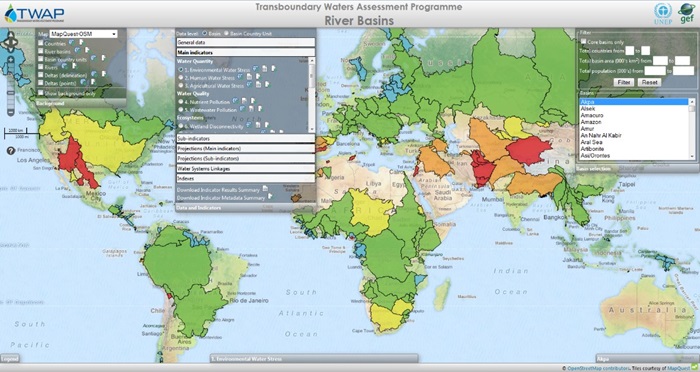Transboundary water systems are shared by two or more nations. They are linked by a complex web of environmental, political, economic and security interdependencies. Transboundary water management is likely to be more complex than that at the national level since the water management regime, priorities and cultures usually differ more between than within countries. Despite the immense dependencies on transboundary water resources, the health of these ecosystems is degrading rapidly.
An assessment of the entire planet’s transboundary water resources
The Transboundary Waters Assessment Programme (TWAP) was initiated by the Global Environment Facility to create a baseline assessment of the world’s transboundary water resources to support the following:
- Science-based benchmarking and knowledge exchange
- Identification and classification of water bodies at risk; and
- Increased awareness of the importance and state of transboundary waters
UNEP-DHI led the global Transboundary River Basins assessment, which involved eight partner organisations.
Easily-accessible results on an interactive portal
TWAP is by far the most comprehensive assessment of the world’s 286 transboundary river basins, identifying basins at risk from a variety of issues, covering water quantity, water quality, ecosystems, governance and socio-economics and risk to deltas.

Related data can be downloaded via an interactive results portal. © DHI
Global and regional relative risk maps, shapefiles and tables (basin and sub-basin level) for more than 20 baseline and projected indicators can be accessed and downloaded via the interactive results portal. In addition, 286 basin factsheets containing key information for each of the transboundary basins can be downloaded from the portal, along with a comprehensive technical assessment report on status and trends in transboundary rivers.
Learn more
Contact us for more information on this project.